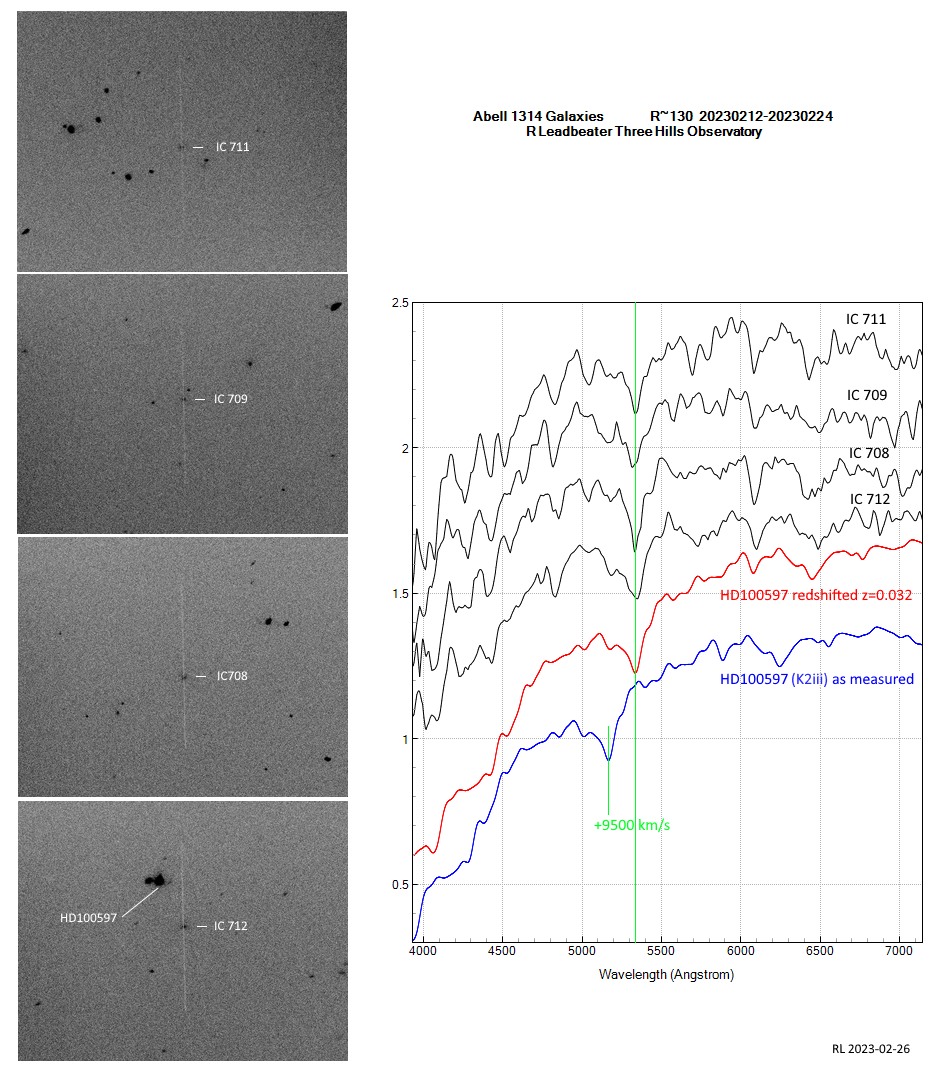Observation by Robin Leadbeater: Abell 1314 - galaxy redshifts
Uploaded by
Robin Leadbeater
Observer
Robin Leadbeater
Observed
2023 Feb 12 - 21:24
Uploaded
2023 Feb 26 - 16:22
Objects
IC708
IC709
IC711
IC712
Spectrum
Equipment
- ALPY 600,200 spectrographs
- ATIK 428 ex camera
- Celestron C11 SCT 280mm aperture f5.5
Exposure
typically 2x 1 hour per spectrum
Location
Wigton, Cumbria, UK
Target name
Abell 1314
Title
Abell 1314 - galaxy redshifts
About this image
For the Deep Sky Section’s Object of Interest for February 2023 (the galaxy cluster Abell 1314, specifically IC708,709,711 and 712 seen in their relative locations in this image by Richard Sargent), I decided to use low resolution spectroscopy to estimate the redshifts and verify that they are indeed members of the same cluster. An initial set of spectra was taken 20230212-13 using the ALPY 600 but the targets proved too faint so a second set was taken 20230224 using the lower resolution ALPY200 faint object spectrograph and the two sets combined to give a single set of lower resolution spectra but with reasonable signal/noise ratio.
In the absence of suitable emission lines (IC708 is catalogued as a Seyfert galaxy but no emission lines could be seen), the redshift can be estimated by cross correlating with stellar spectra, the aggregate spectrum of billions of stars in a galaxy typically approximating to that of a K type star. The foreground star HD100597 (K2iii) in the same field provided a convenient reference. The spectra of the four galaxies are very similar with many common features with no detectable offset between them, confirming that they have the same redshift. The redshift relative to HD100597 however is clear, particularly the feature marked on the plot (Fraunhofer b, the Mg triplet blend, also visible in the solar spectrum). The estimated redshift of the group is z= 0.032 which equates to a luminosity distance of ~140Mpc using 70km/s/Mpc for the Hubble constant. This is comparable with the distances in the NASA Extragalactic Database of around 150Mpc based on the Tully-Fisher technique (Although Supernova SN 2004H in IC708 was apparently a type 1a, there is no record in NED of it having being used to independently estimate the distance)
Files associated with this observation
Like this image
Copyright of all images and other observations submitted to the BAA remains with the owner of the work.
Reproduction of work by third parties is expressly forbidden without the consent of the copyright
holder. By submitting images to this online gallery, you grant the BAA permission to reproduce them in
any
of our publications.


